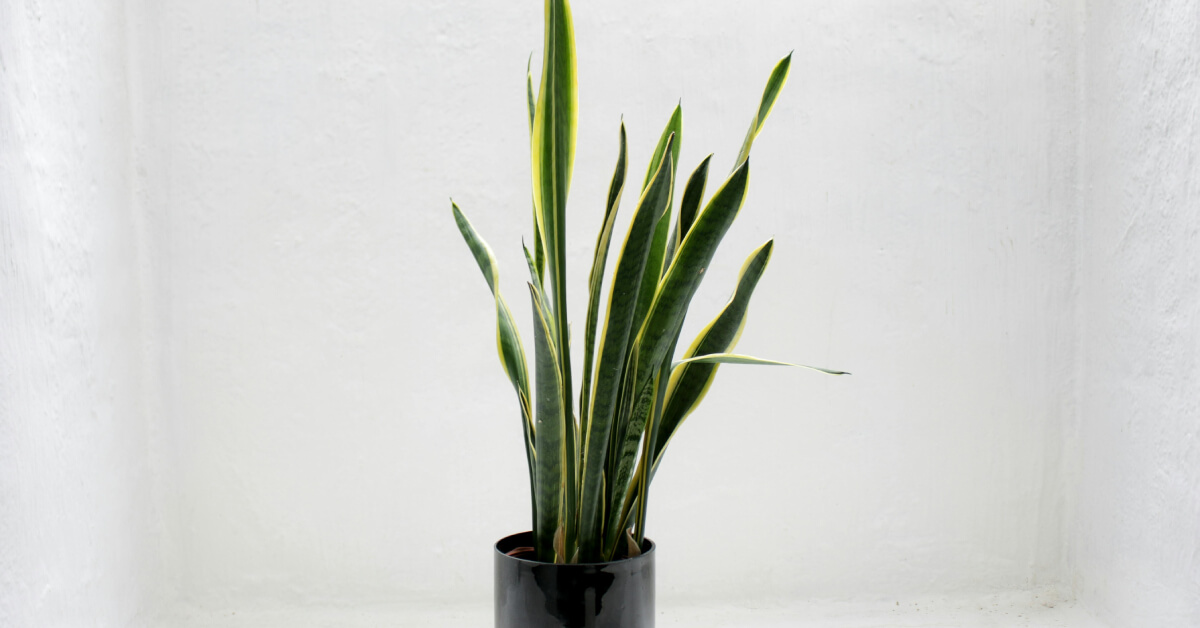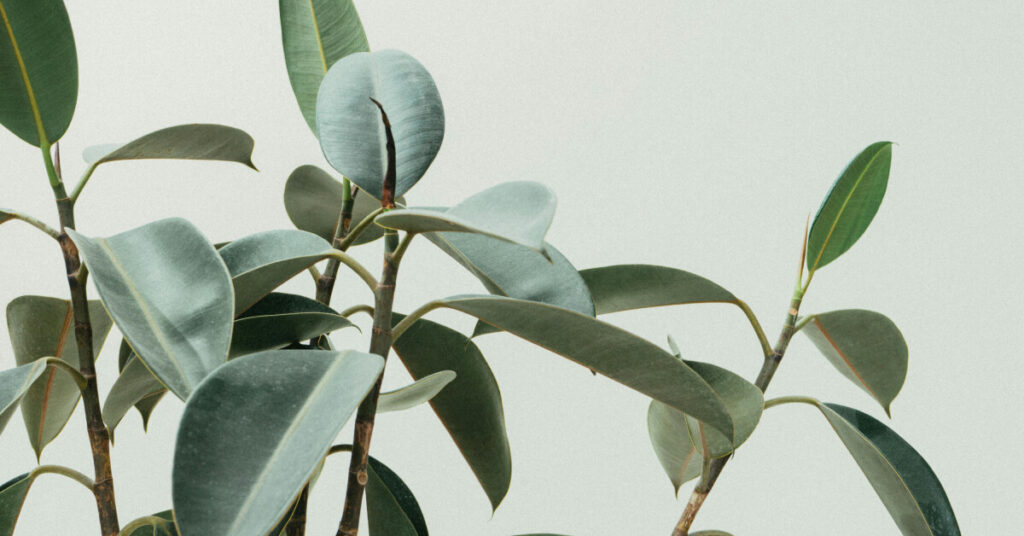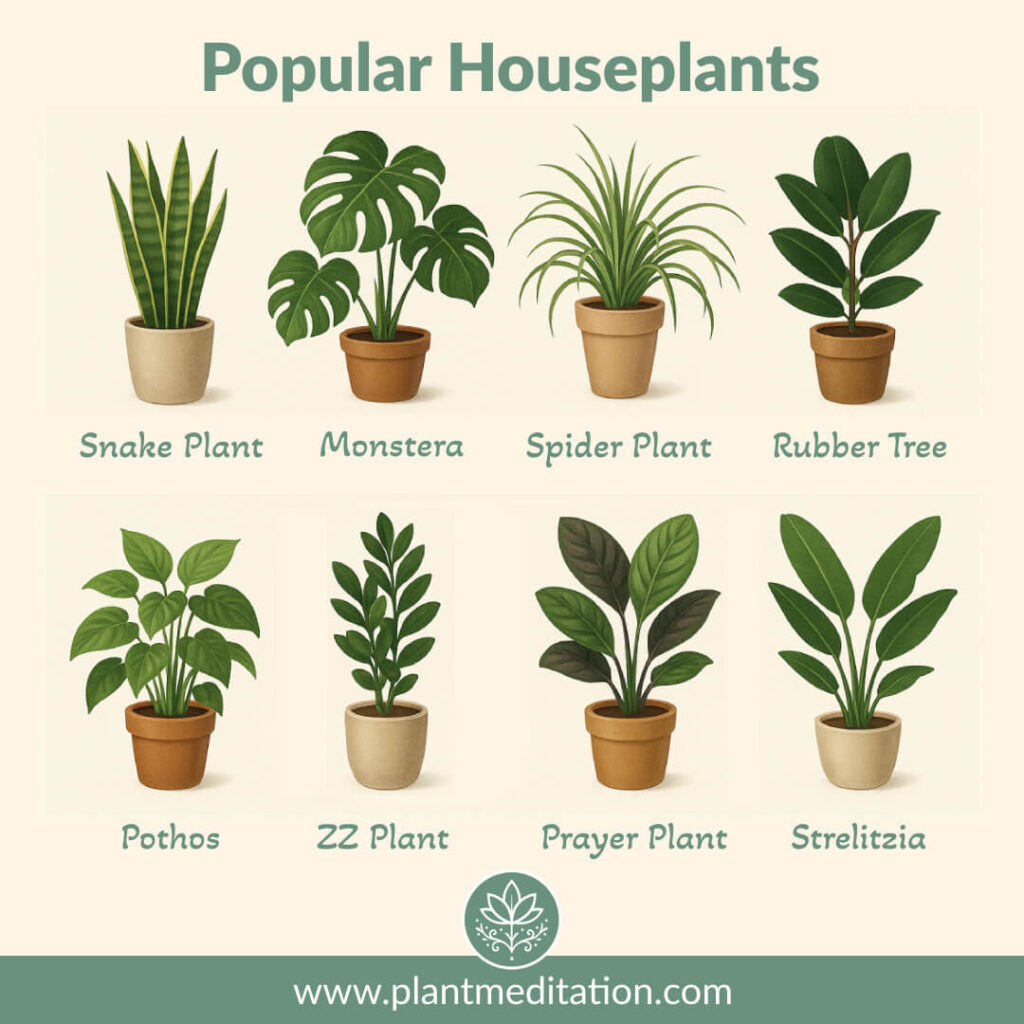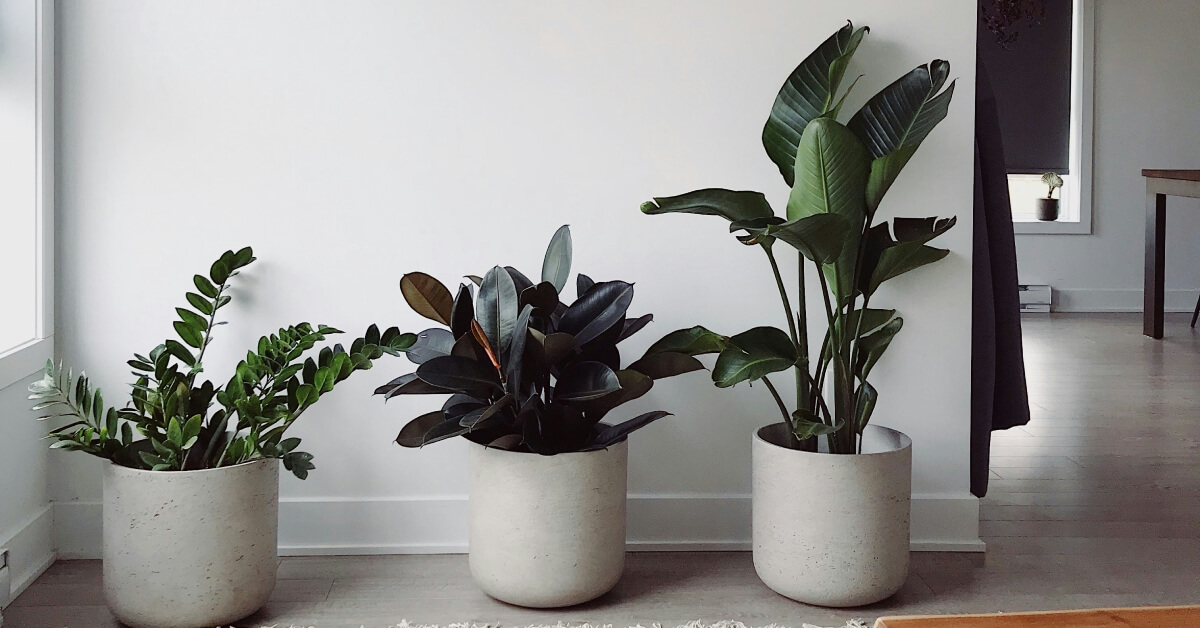What Makes a Plant Beginner-Friendly?
When you’re starting your indoor plant collection, it’s important to select plants that require minimal care. The best beginner-friendly plants typically share a few key traits that make them easier to maintain. These include low watering needs, adaptability to different lighting conditions, pest and disease resistance, and minimal humidity requirements. Choosing plants with these characteristics helps ensure they can thrive even with the occasional lapse in attention, making them perfect for those new to gardening or with a busy lifestyle.
The beauty of these plants lies in their resilience—they don’t need constant care or specific environmental conditions. With the right selection, you can build a thriving indoor garden without the stress of overcomplicating things.
Best Low-Maintenance Houseplants for Beginners
1. Snake Plant (Sansevieria)
Snake plants are one of the most adaptable houseplants, making them an excellent choice for beginners. This plant thrives in low to bright, indirect light and requires watering only every 2-3 weeks. Its ability to survive on little water and its tolerance for various light conditions makes it a virtually indestructible plant for anyone starting their collection.
Why it’s great: Snake plants can survive in a variety of conditions, tolerate neglect, and even help purify the air by removing toxins.

2. ZZ Plant (Zamioculcas zamiifolia)
The ZZ plant is another hardy plant that requires very little care. It flourishes in low to medium light and needs watering just once every 2-3 weeks. The ZZ plant is drought-tolerant, meaning it stores water in its thick roots, making it resilient to occasional neglect.
Why it’s great: Known for its ability to thrive on neglect, it’s a perfect plant for busy plant owners or beginners who may forget to water occasionally.
3. Pothos (Epipremnum aureum)
Pothos, often referred to as “Devil’s Ivy,” is nearly impossible to kill. It grows well in low to bright, indirect light and requires watering only once a week. Pothos also adapts well to different light conditions and is an excellent choice for people who want a low-maintenance plant with some flexibility.
Why it’s great: Its trailing vines make it ideal for hanging baskets or shelves, and its ability to grow in almost any lighting condition makes it a versatile option for any room.
4. Peace Lily (Spathiphyllum)
Peace lilies thrive in medium to bright, indirect light, and they can go for a week without needing to be watered. Their distinctive white flowers make them an attractive addition to any space. If you notice that the leaves start to droop, this is a clear sign that it’s time to water.
Why it’s great: Peace lilies not only add beauty to a room but are also great for air purification. However, it’s important to note that they are toxic to pets if ingested, so take care if you have animals at home.
5. Spider Plant (Chlorophytum comosum)
Spider plants are known for their fast growth and resilience. They thrive in medium to bright, indirect light and only need to be watered once a week. Their ability to grow baby plantlets makes them easy to propagate and share with friends.
Why it’s great: Spider plants are perfect for beginners, and they are pet-friendly, making them a good choice for households with animals.
6. Cast Iron Plant (Aspidistra elatior)
As the name suggests, the Cast Iron Plant is incredibly tough and can survive in almost any condition. It thrives in low to medium light and requires very little watering, about once every 2-3 weeks. This plant can handle temperature fluctuations and doesn’t mind being neglected occasionally.
Why it’s great: It’s ideal for areas with low light, and its ability to withstand a variety of conditions makes it one of the most resilient plants for beginners.
7. Rubber Plant (Ficus elastica)
Rubber plants grow best in bright, indirect light and need watering about once every 1-2 weeks. This plant is easy to maintain and adaptable to indoor conditions. Its thick, glossy leaves add an attractive element to any room.
Why it’s great: The rubber plant tolerates occasional neglect and grows well in standard indoor temperatures, making it a good choice for beginners who want a visually striking plant.

8. Aloe Vera
Aloe vera is a drought-tolerant succulent that does well in bright, indirect to direct light. Watering is required only every 3 weeks once the soil has completely dried out. Known for its medicinal properties, the gel inside its leaves can be used to treat minor burns and skin irritations.
Why it’s great: Aloe vera is very easy to care for and does not require frequent attention. It thrives in dry conditions and is an excellent addition to sunny windowsills.
9. Jade Plant (Crassula ovata)
Jade plants are a type of succulent that requires bright, indirect light. They thrive in dry conditions and only need watering every 2-3 weeks. Jade plants are often associated with good luck and prosperity, making them a popular houseplant.
Why it’s great: Jade plants are low-maintenance and can live for many years, making them an excellent long-term investment for beginners.
10. Chinese Evergreen (Aglaonema)
Chinese Evergreens are among the best plants for low-light areas. They thrive in low to medium light and need watering only once a week. Their attractive foliage, available in several colors, makes them an excellent choice for both beginners and experienced plant owners.
Why it’s great: Chinese Evergreens are adaptable to various light conditions, making them perfect for rooms with minimal sunlight.
Caring for Low-Maintenance Indoor Plants
Even though these plants are known for being low-maintenance, they still require basic care to thrive. A good watering routine, proper lighting, and occasional fertilizing will help keep your plants healthy and growing.
Watering Tips
One of the most common mistakes plant owners make is overwatering. Always check the soil before watering—if the top 2 inches are dry, it’s time to water. For succulents and cacti, allow the soil to dry completely before watering again. For tropical plants like Peace Lily or Spider Plant, ensure the soil stays moist but not waterlogged.
Waterlogged plants? Check out how to save overwatered plants.
Lighting Considerations
Lighting is essential for plant health. Bright, indirect light is ideal for most houseplants, but if you have limited natural light, consider using grow lights to supplement. Remember to rotate your plants every few weeks to ensure even growth on all sides.
Fertilizing Recommendations
Fertilize your plants during the growing season (typically spring and summer) with a balanced, liquid fertilizer every 4-6 weeks. Avoid over-fertilizing, as too much fertilizer can damage the plant’s roots and leaves. Reduce or stop fertilizing during the winter months when the plants are dormant.
Growing a Successful Indoor Garden
Starting with low-maintenance plants is a great way to begin your indoor gardening journey. As you gain experience and confidence, you can slowly introduce more demanding plants into your collection. Remember, the key to keeping your plants healthy and vibrant is consistency in care, monitoring, and patience. Whether you’re caring for succulents, houseplants, or herbs, the right approach will help you cultivate a thriving indoor garden with minimal effort.


